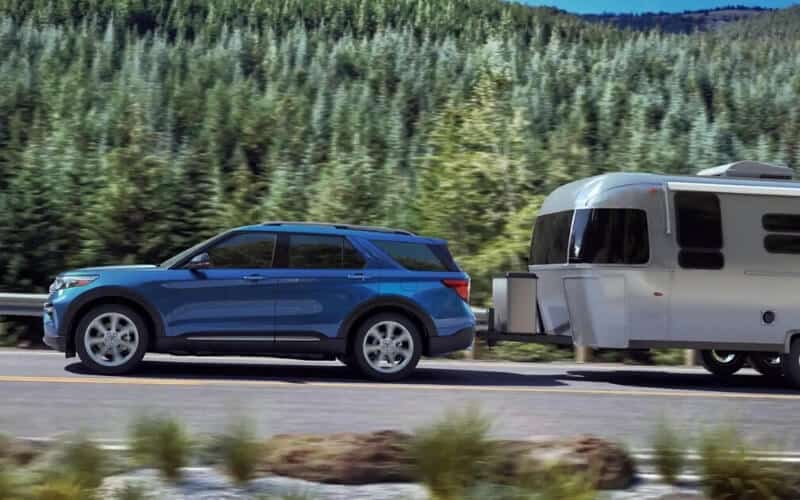If you’re in the market for a new RV, or you’re thinking about renting one for a major vacation, then chances are good you’ve rubbed shoulders with the terms “Self-Contained RV.”
Right off the bat, this is not some sort of sealed camper with recirculating air to keep germs and pests out.
A self-contained RV is fully capable of supporting itself and its occupants without having to hook up to the resources of an RV park, campground, or municipal source. Though for a lot of so-called self-contained RVs, the amount of time they can effectively dry camp can vary depending on the features, construction, engineering as well as storage capacity for things like fresh and wastewater.
To find out if a self-contained RV is best for your camping style or your next big camping adventure, we’re going to have to take a closer look at what goes into one.
What Is a Self-Contained RV?
By definition, a self-contained RV is one that can support you for multiple days without having to connect to any other outside resources. The priority list might vary depending on your camping style.
For most RVers, the top priorities are a generator or green technology to keep their house battery banks charged, a large freshwater storage tank, and bathroom facilities. Especially if you are going to be boondocking, off-roading camping, or staying at a primitive campground with unappealing vault toilets.
Black water storage tanks tend to also be a top priority as they hold the water for your toilet facilities. Sometimes you can get away with a cassette toilet, which is a removable 5-gallon black water tank. Though this is only enough capacity for two to three people for two to three days. Most larger self-contained RVs have large black water storage tanks
Gray water storage tanks tend to be the top secondary priority. Having enough gray water storage capacity translates into the ability to shower, and wash dishes more often without having to dump the water illegally, or find a dump station to safely empty it.
A lot of the best self-contained RVs are also engineered for efficiency. This might include things like LED lighting to reduce the draw on the house battery bank. Low flow toilets to reduce the drain on the fresh water storage tanks, and keep black water volume to a bare minimum.
Are All RVs Self-Contained?
Across most of North America, most RVs are considered “Self-Contained” with the exception of some popup campers, teardrop campers, and a few stripped-down class B motorhomes.
Though just how long a particular RV can continue to support itself and its occupants can vary based on how efficiently it was engineered, its onboard ability to generate power, and the size of the water storage tanks.
What Does It Mean If An RV Isn’t Considered To Be Self-Contained?
A lot of the RVs sold on the North American marketplace are self-contained. Though some smaller campers, teardrop trailers, and many Class B motorhomes aren’t technically self-contained.
They either don’t have bathroom facilities, or they lack fresh water storage tanks large enough to support two or three people for more than a day. RVs that aren’t self-contained typically need to stay at campgrounds and RV parks with restrooms and electrical hookups.
Components of a Self-Contained RV
There are some essential components of a self-contained RV, as well as a few efficiencies, features that a lot of the best self-contained RVs rely on to camp off the grid for longer.
This includes a robust electrical system, batteries, and water storage tanks. Though there are ways to augment them or extend just how long they can support you in your self-contained RV.
Things to Consider Before Investing in a Self-Contained RV
When choosing the best self-contained RV for your purposes you need to consider the various factors and how important they are to your particular camping style. You should note that not all RV manufacturers think of the same thing when they hear the term “Self-Contained RV.”
Technically an RV with a house battery bank, a bathroom, fresh water storage tanks, and a solar panel slapped on the roof could be construed as a self-contained RV.
Taking into account the prime features of a self-contained RV and how you prioritize them will weigh heavily in finding the best model to meet your camping needs.
When you’re looking for the best self-contained RV to meet your needs, you want to consider the following factors:
1. A Self-Supporting Electrical System
Being able to meet your entire family’s electrical needs is one of the most critical components of a self-contained RV.
This might mean prioritizing a travel trailer, fifth-wheel, or motorhome that comes with a generator included in the initial purchase, or at least a model that has a generator hookup. Then you can either install your own generator or an RV dealership can install one as part of the initial purchase agreement.
Diesel generators are more fuel-efficient, but they are large and heavy. At the same time, they can only burn one type of fuel. A so-called “Dual Fuel” generator can be set up to run on both gasoline and propane.
They give you the ability to keep your self-contained RV off the grid for longer by making the most out of the multiple fuel sources you already have available. Especially at the end of a trip when you likely will have propane left in your tanks.
When considering the size and type of generator you need for your self-contained RV, you need to take into account the amount of power you will use at any one time. This includes things like:
When you add all these wattage demands up, you can dial in the type and size of generator you need to keep your RV truly self-contained.
Of course, with advancements in solar panels and other green energy technology, a lot of self-contained RVs are employing other options to augment their onboard electrical systems or extend the life of their house batteries.
This is especially common in teardrop campers that are engineered for off-road camping and minimal power demands. Though even a large solar panel affixed to the roof of a Class A motorhome can buy you additional days of fully off-the-grid camping.
2. Bathroom Facilities
Most people consider a bathroom with a toilet to be an absolute “Must Have” for an RV to qualify as being self-contained. Though there are two different types of bathrooms to consider.
3. Enhanced House Batteries
Of course, the best way to reduce your need to run the generator and extend your time with green energy technology is to have large house batteries.
When considering the best self-contained RV with the most possible time being able to spend off-the-grid, you want to prioritize one that has a multi-battery bank, or a large enough house battery bay to support additional 12 Volt batteries.
If you won’t be camping in deep cold, you might want to consider investing in or upgrading to Lithium-ion batteries. They deliver the same amount of power at 1% that they do at 99%. This isn’t the case with traditional 12 Volt lead-acid batteries which tend to fade in performance anytime they are drained below 50%.
4. Large Water Storage Tanks
When considering a self-contained RV, you might want to give top priority to a model with a large fresh water storage tank. This gives you enough drinking, bathing, and toilet-flushing water to survive for days of camping off the grid.
A lot of people will opt not to drink from their fresh water tanks, and instead draw their drinking and cooking water from simple gallon jugs or aquatainers.
Immediately following the fresh water storage tank on the priority list is to consider an RV with larger gray water, and black water storage tanks. Chances are good you can find RV dump stations, municipal dump stations, and other certified dump sites to let you quickly empty your gray and black water storage tanks. You can also easily release a modest volume of your wastewater tanks into portable tanks.
5. Efficient Lights, Appliances & Devices
Efficiency is the name of the game when it comes to maximizing the amount of time you can spend off the grid. A self-contained RV with LED lights and energy-efficient appliances will draw less on the house batteries, as well as need less support from a generator.
Some LED lighting systems have a low enough draw that they can be completely neutral when connected to solar panels, or other green energy technologies.
An RV Absorption Refrigerator or three-way refrigerator uses far less electricity than a residential refrigerator. They can also be set up to run on propane, which reduces the demand on a generator or the self-contained RV’s house batteries.
A tankless water heater or a hot water heater that burns propane to heat the water can further reduce the strain on the RV’s house battery bank or generator. A tankless water heater can also give you hot water on demand, which can further help extend your fresh water storage tanks.
6. Battery Monitoring Systems
While it might seem like a minor thing, you will get the most out of your self-contained RV’s electrical system if it has a battery monitoring system installed. It lets you know the level of your house batteries and/or how they are performing. Even if the self-contained RV you are interested in doesn’t have a battery monitoring system built-in, they are inexpensive and easy to install.
This will go a long way toward making the most out of your house battery banks, as well as developing a better understanding of the relationship between your generator, green energy technology, and your batteries.
A lot of people with battery monitoring systems in their self-contained RVs also develop a better understanding of their power consumption to further extend the amount of time they can boondock off the grid.
7. Auxiliary Fuel Tanks
If you are thinking about getting a self-contained toy hauler, then a model with a large auxiliary fuel tank should move up your priority list. These models typically have RVs that have auxiliary fuel tanks in the rear cargo garage. They are a great option for refueling your ATV, UTV, or side-by-side.
You might want to also prioritize “Toys” burning the same type of fuel as your generator. This can help extend the amount of time you can go without having to return to the civilized world for fuel.
Auxiliary fuel tanks also tend to be much safer than keeping loose, leaky gas cans bouncing around in the storage compartments of your RV.
8. Larger Propane Tanks
A lot of the best self-contained RVs also include large propane tanks or perhaps. dual propane tanks. Prioritizing one of these models helps you stay off the grid for longer periods of time.
Larger propane stores become an even greater priority in a self-contained RV with a three-way refrigerator, dual fuel generator, propane hot water system, or other propane appliances.
Benefits of a Self-Contained RV
The more self-contained your RV is, the longer you can stay off the grid. Though this is just one of several benefits of self-contained RVs. This includes
1. Self-Contained RVs Have An Easy Time Primitive Campgrounds
A lot of primitive campgrounds are near prime hunting grounds, fishing grounds, and beautiful natural attractions. Though they rarely offer full hookups, most simply have vault toilets with nothing else to support you.
In a self-contained RV, you can stay at more primitive campgrounds for longer. This opens up the opportunity to fish, hunt and hike away from the crowds that typically fill full-service campgrounds to the max during the peak travel season.
2. Self-Contained RVs Let You Enjoy Public Land Camping
A lot of the best hunting opportunities and hiking trails are found on public lands like National and State forests. While they do allow for camping with certain rules in place, they rarely ever have hookups available.
This opens up better camping opportunities for self-contained RVs, which is probably why they are a prime investment for public land hunters every fall hunting season.
3. Off-Road Camping Is A Breeze With A Self-Contained RV
If you love to off-road camp, then you need a self-contained RV to support you on the path less taken. The more self-sufficient your RV is, the more time you can spend away from the crowds and soak in things like dark skies camping.
4. Self-Contained RVs Can Take Advantage Of Off-Peak Season Camping Discounts!
A lot of full-service campgrounds near prime locations will remain open with limited capacity after the summer peak season has passed. Though they typically turn off all their water resources, and might only offer limited electricity. This is just to protect their systems from damage caused by winter cold.
When you have a self-contained RV, you can stay in these prime locations, during off-peak times of the year for cheap. It’s a great way to get close to popular attractions, while still staying comfortably off the grid.
5. Self-Contained RVs Can Be A Life Saver During A Power Outage
Has your area ever been ravaged by severe storms that knocked out the public utilities for days, if not weeks on end? In a time like this, people with a self-contained RV parked in their yard will simply move from the house to the RV to stay cool, comfortable, and clean. More than once, a self-contained RV has proved to be a true lifesaver in a time like this.
The Drawbacks Of A Self-Contained RV
Of course, self-contained RVs aren’t perfect for everyone. There are a few things to consider as potential drawbacks before investing in a self-contained RV. This includes things like:
1. Self-Contained RVs Are More Expensive
All those creature comforts, generators, large storage tanks, and beefed-up house battery banks also drive up the price of a self-contained RV. In some cases, you find a price tag that is 10 to perhaps even 30% higher than a small non-self-contained model with fewer features.
2. Self-Contained RVs Tend To Weigh More
Self-Contained RVs with all their added features also tend to have a much higher gross vehicle weight rating. In a self-contained motorhome, this translates into more fuel costs. In a self-contained travel trailer, fifth wheel, or toy hauler it can mean lower MPG on your tow vehicle, which drives up the cost to get from Point A to Point B on every trip.
3. The Cost Of Ownership Is Higher With A Self-Contained RV
All the sophisticated systems and beefier construction also mean that self-contained RVs require more maintenance. They also tend to go through tires and accessories faster, due to their weight. This means that the average annual cost of ownership for a self-contained RV can be 10 to as much as 25% higher.
4. Self-Contained RVs Have Higher Insurance Premiums
A lot of the more sophisticated self-contained RVs have higher insurance premiums that reflect their initial purchase price.
They also tend to cost more to repair if there is a problem, and insurance companies are sure to pass this on to you as either a higher annual premium or a higher deductible that increases your out-of-pocket costs.
How Long Can You Be Self-Contained in an RV?
The best self-contained RVs can support a small family for up to a week. Savvy campers, with energy-efficient lights and appliances, might be able to extend that time out to as much as 10 days without needing to seek fresh supplies and fuel.
Though this is considered to usually be the top end. If you have more than three or four people in your family, and your water storage tanks are somewhat small, your self-contained RV might only be able to support you off the grid for two to three days.
When Do You Need a Self-Contained RV?
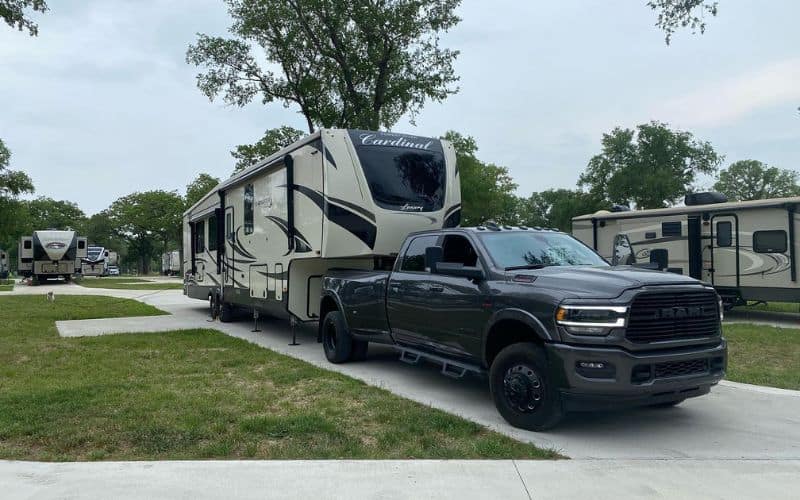
A self-contained RV comes in handy if you want to stay at primitive campgrounds and remote off-road campsites. This includes times when you want to camp on public land.
A self-contained RV is also a high priority for times when you want to take a long camping trip with multiple stops along the way. Especially if those campgrounds are remote and don’t maintain an active reservation system.
Do You Need One?
You only really need a self-contained RV if you spend a lot of time camping at remote places, like public hunting land, or primitive campsites without resources. If you prefer to camp at RV parks and campgrounds with full hookups available, then there’s no need to go overboard on a self-contained RV with robust boondocking features.
How Much Does A Self-Contained RV Cost?
On the low end, you can expect something like a self-contained off-road teardrop camper to cost around $35,000 depending on accessories and things like solar panels.
On the high-end, a self-contained luxury fifth-wheel trailer or motorhome might cost as much as $500,000. Self-contained RVs tend to cost more than less well-appointed models.
Conclusion
Most of the RVs sold on the North American marketplace are technically considered to be “Self-Contained” though the question really comes down to just how long you need your RV to support you when you’re camping off the grid.
If you are looking for a self-contained RV that can support you for 5 to 7 days or more, you are going to prioritize a model that comes with a generator, large water storage tanks, and efficient appliances.
This is great for things like camping on public land where hookups are non-existent or taking a long road trip through rugged off-road destinations. If you just need a self-contained RV to get you through a long three-day weekend at a primitive campground, then you might not necessarily need the generator.
Sometimes solar panels, large house batteries, and energy-efficient lighting are all that’s needed to get a self-contained RV through a long weekend vacation off the grid.

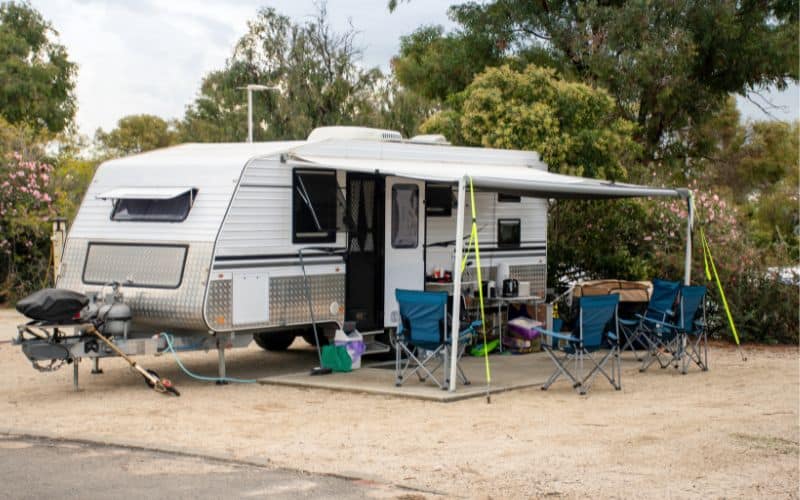
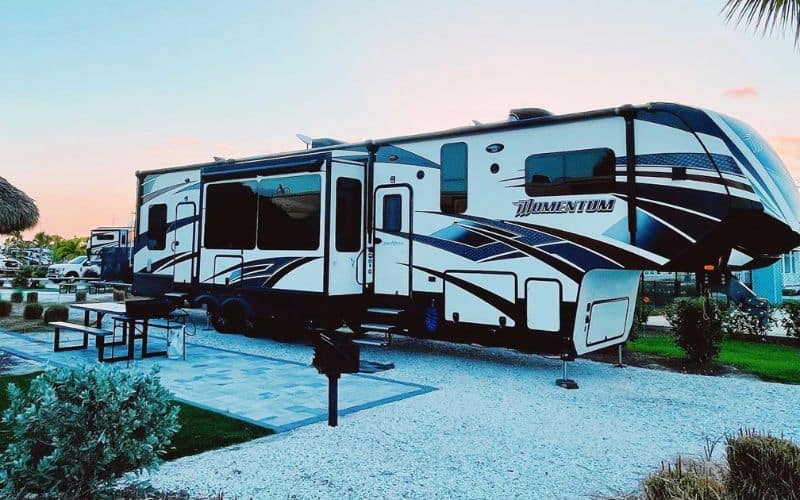
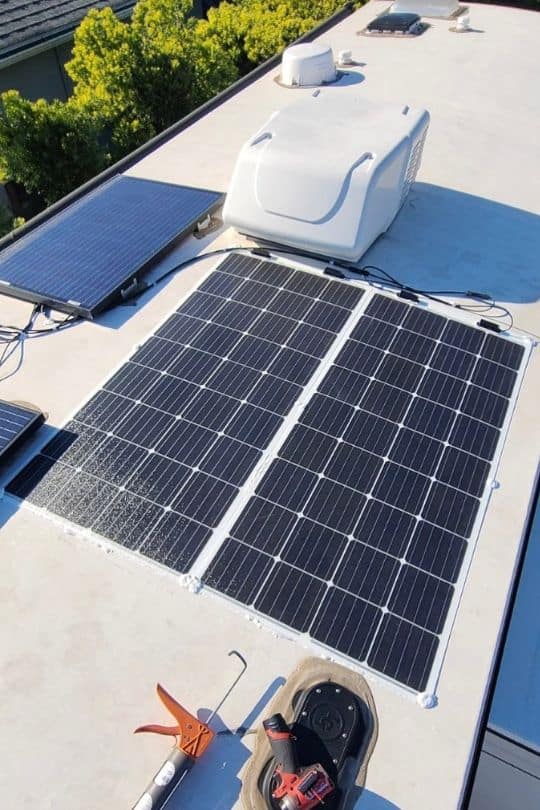
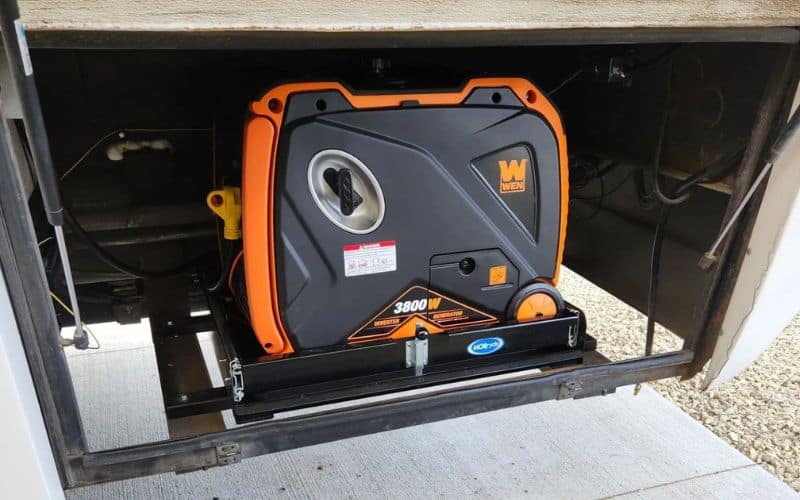
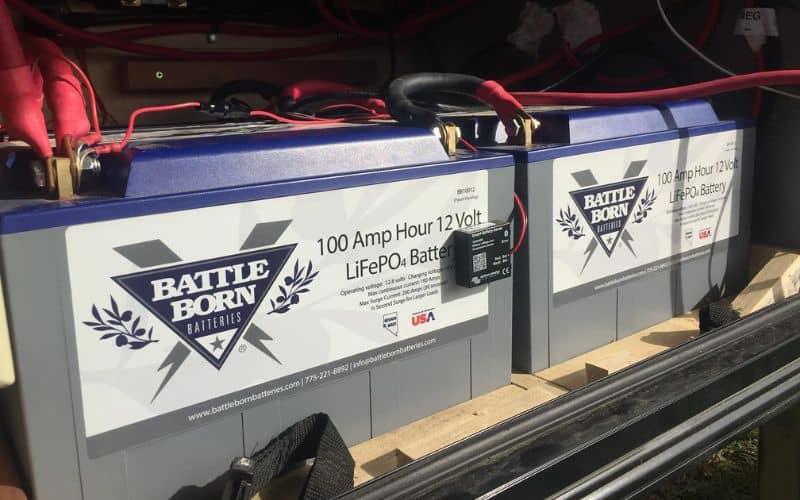
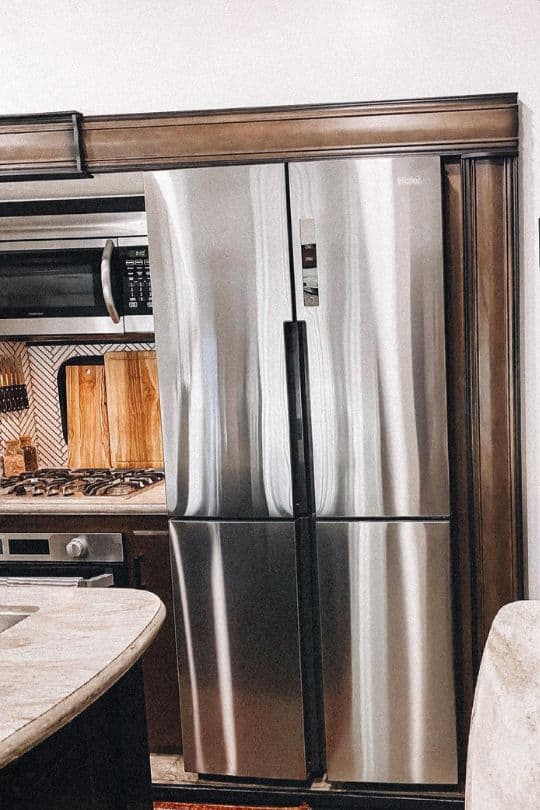
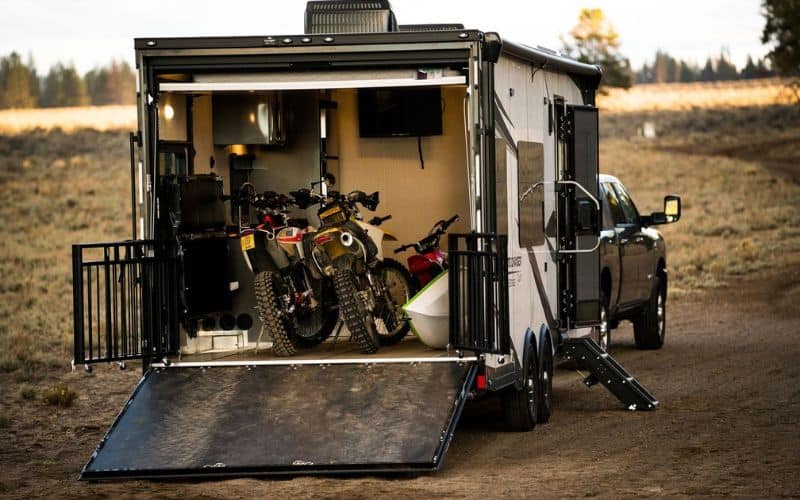
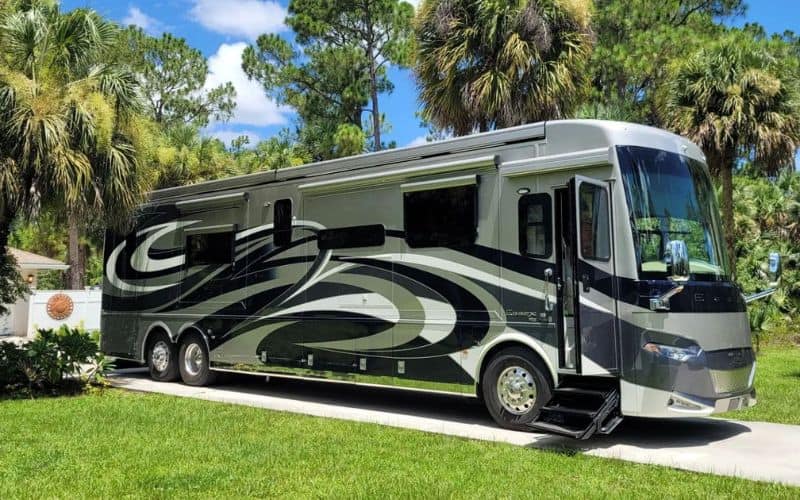
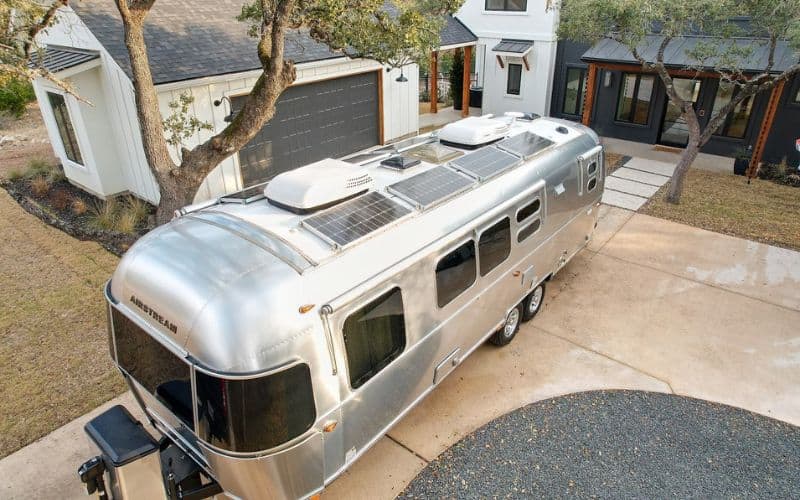
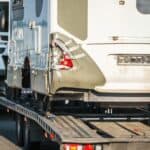
![[currentyear] Subaru Ascent Towing Capacity: Can It Tow A Camper Trailer? 12 Subaru Ascent Towing Capacity](https://www.rvingknowhow.com/wp-content/uploads/2022/08/Subaru-Ascent-Towing-Capacity-150x150.jpg)
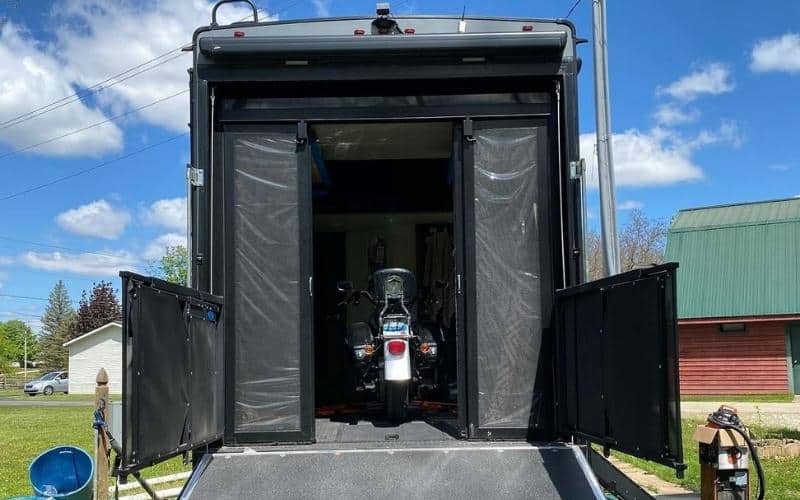
![How to Mount a Winch on Your Trailer [Step-by-Step Guide] 14 How to Mount a Winch on Your Trailer [Step-by-Step Guide]](https://www.rvingknowhow.com/wp-content/uploads/2023/07/Rving-5.jpg)
